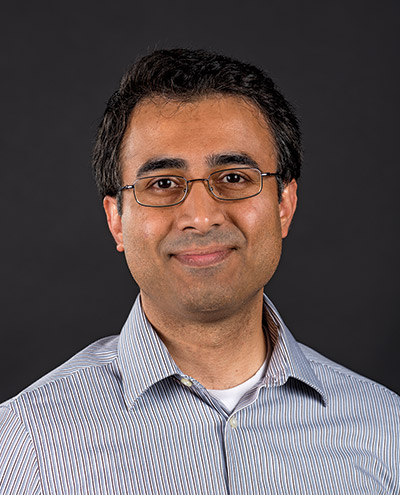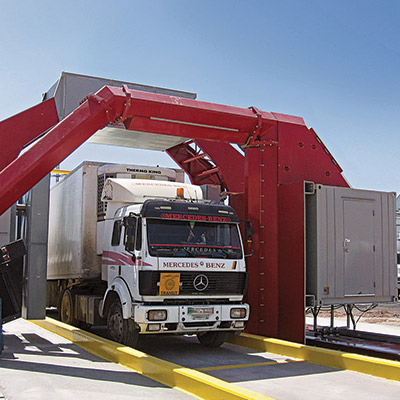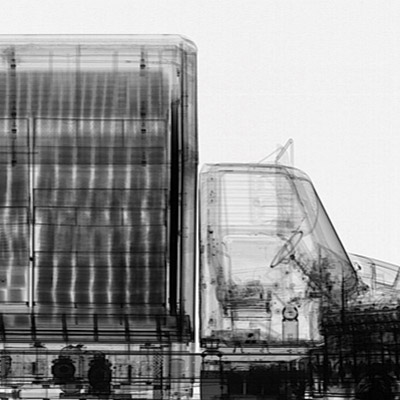Protecting Our Borders
A semi-truck attempts to cross a border but passive radiation detectors sound an alarm, alerting Customs and Border Protection (CBP) agents that the trailer is emitting gamma rays, the most dangerous type of radiation. At the same time, agents at a port flag a radioactive cargo container on a ship arriving from a foreign country. Traffic is paused at the border crossing and workers stop unloading containers from the ship until CBP agents clear the containers for entry. Every minute means loss of money for the US economy. Every minute is also closer to potential detonation of a “dirty” bomb.
Although CBP agents are not scientific experts, they are supported around the clock by a team of analysts at a secure location who evaluate radiation signatures in real-time to determine whether suspects and cargo are detained or allowed entry. Those analysts are supported by scientists across the nation working to make the process faster and more accurate, protecting the U.S. people and our economy. Koushik Biswas, assistant professor of physics, is one such scientist.
With over $540,000 in funding from the U.S. Department of Homeland Security, Department of Energy and the National Science Foundation, Biswas collaborates with other researchers to create better nuclear radiation detectors. His collaborators include researchers at Wake Forest and Fisk universities and Radiation Monitoring Devices, Inc., working together towards a global nuclear detection architecture. This will create a multi-layered defensive network to assist law enforcement agencies in detecting and responding to radiological and nuclear threats.
Distinguishing naturally occurring radiation from that used for bombs is complex, Biswas explains. The most common bomb components, uranium-235 and plutonium-239, emit only small levels of radiation, thus requiring very sensitive detectors. Bulk shipments of common consumer products may emit more passive radiation than the small amount of radioactive material required for building a very destructive bomb. Additionally, components of a nuclear bomb may be shipped in shielded containers, making detection even more difficult. Because of the sensitivity required, false alarms at our borders are common and very disruptive.
Biswas and his collaborators are designing radiation detectors with two main components: material that absorbs radiation and emits a signal, and an electronic component that analyzes the signal and helps analysts classify the radiation as dangerous or naturally occurring. Biswas says his team faces two challenges. “First we must create a more effective material to reduce false alarms and an electronic component that analyzes signals more quickly to prevent shipping delays. The second challenge is to produce the materials as cheaply as possible without sacrificing precision of the detector.”
Biswas has a benchmark challenge to create a $100 detector with a specified level of precision. “This can only be accomplished by pairing theory and experiments together. I examine at the atomic and electronic levels how potential detection materials react with radiation and what signals they produce. I use physics theory to answer these questions and then talk to my experimental partners who actually probe the materials and signals.” During his education and training, Biswas says he was always attracted to theory, but became an experimentalist instead. He worked for IBM, Natural Renewable Energy and then Oak Ridge National laboratories before finding his “true calling” in theoretical and computational physics. Biswas credits his current success in part to his diverse training experiences, “Sampling other branches of physics and having an experimental background has helped. I now collaborate closely with experimentalists and can communicate well with them. Because of this I can reach common goals with collaborators who think and work very differently.”
Biswas plans to continue his innovative work in materials physics. “Every technology – smart phones, iPads and touch screens – these are all materials that were very expensive in the early 2000s. But hundreds of researchers like myself worked together to contribute to breakthrough touch screen technology that created a more affordable material. It is so exciting because I can see the impact of my work and I want to continue to be a part of that.”
Biswas predicts that harvesting energy from renewable sources and storing it in easily accessible ways will be a large part of the scientific community's work in this century. That technology is important for example, in smart cars. “Energy storage and production is another area where I will invest effort in the future, but the theme remains the same. It is always the materials.” Biswas has big dreams, such as designing semiconductor materials that would allow us to produce $1 computers. Considering his skills in collaboration and his contributions thus far, the dream may not be far-fetched.









